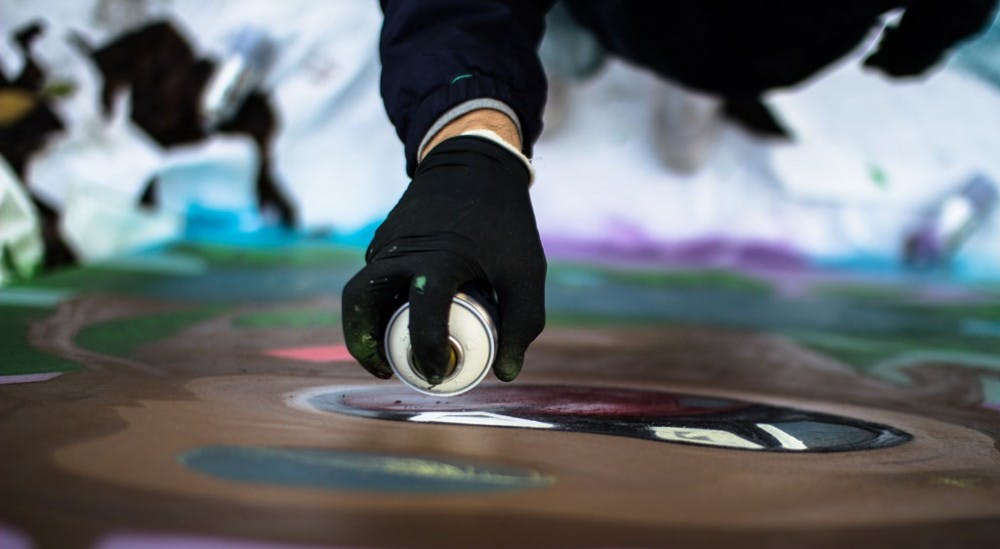Television crime shows are by no means homogenous—they may be fictional or based on true events, documentaries or live action, dramatic or comedic—but they are ubiquitous, and have had sustained popularity as television has evolved. Perhaps it’s the mysterious nature of crime that audiences are drawn to, or the fascinating psychology of the criminal mind. Maybe it’s the suspense of a well–crafted “whodunit” scenario that makes fictional crime compelling, and the grisly, off–putting details of true crime that gets under the skin of those who prefer documentary–style series. In any case, crime has, and will likely continue to be subject matter that makes audiences tick.
The Netflix comedy American Vandal is largely a league of its own when it comes to crime television because it finds a way to seamlessly mesh subgenres without compromise. At its core, American Vandal is a mockumentary that satirizes the tropes of true crime television. As the title implies, the show isn’t about any horrific murder or assault, but about a vandalism case—one investigated by an inquisitive high school sophomore with a video camera and a powerful sense of justice. The offense in question isn’t just any old graffiti tag on a school wall, but 27 phallic images spray painted on teachers’ cars during an administrative day off, an offense that school officials pin on class–clown Dylan Maxwell (Jimmy Tatro). The documentarian, Peter Maldanaldo (Tyler Alvarez), isn’t so convinced.
There’s no question that American Vandal is goofy, but something about pairing high schoolers with such overt goofiness makes the show feel incredibly genuine. This is only enhanced by the heavy use of documentary–style exposé to tell the surprisingly complex story. American Vandal does so much with seemingly so little—it is suspenseful, hilarious, and ultimately quite heartfelt and socially conscious. It does whatever it pleases with its inventive approach to crime television, and that ultimately works in its favor.
Though you wouldn’t think so given the nature of the crime it follows, American Vandal is so meticulous in its approach to character development and dialogue that you occasionally forget it’s satire. This is aided by the portrayal of contemporary teenage life, which is executed with remarkable precision. The humor that comes out of this attention to detail is, at times, a bit disarming. When the trustworthiness of the prime witness, a somewhat unsettling student named Alex Tremboli, is brought into question due to a contested claim that hooked up with a popular girl at summer camp, the investigation looks into text messages to determine whether his claim is true. What they find is a message to Alex reading “Heyy”, after which Peter picks apart the possible suggestiveness of that second “y.” American Vandal uses carefully chosen bits of popular culture to enhance both the realism, and the hilarity, of the series.
American Vandal works as a mockumentary because it is more than just its silly premise. It doesn’t get too caught up in being shocking or vulgar, and seeks to function on multiple levels. Beyond humor, it follows a well–constructed, cohesive crime story that never lingers too long on one theory or piece of evidence. Furthermore, running the length of the season is a thoughtful narrative about bias. Peter decides to make the documentary because he doesn’t believe that Dylan, the “obvious” culprit should be suspended and forced into criminal court for something no one has proof he’s done. We come to recognize that, within the school community, there exists a culture where people are sorted into categories that determine their fate—and as a result, an innocent man may have been punished for someone else’s crime.
American Vandal is sort of an enigma. With a premise as wildly bizarre as a student documentary about spray–painted penises on faculty cars, it would only be natural to assume the gag would lose its charm after the first few episodes. However, American Vandal, sustains the interest of its audience with plot twists, thoughtful character arcs, and a surprisingly heartfelt overarching message, all without losing its edge.

